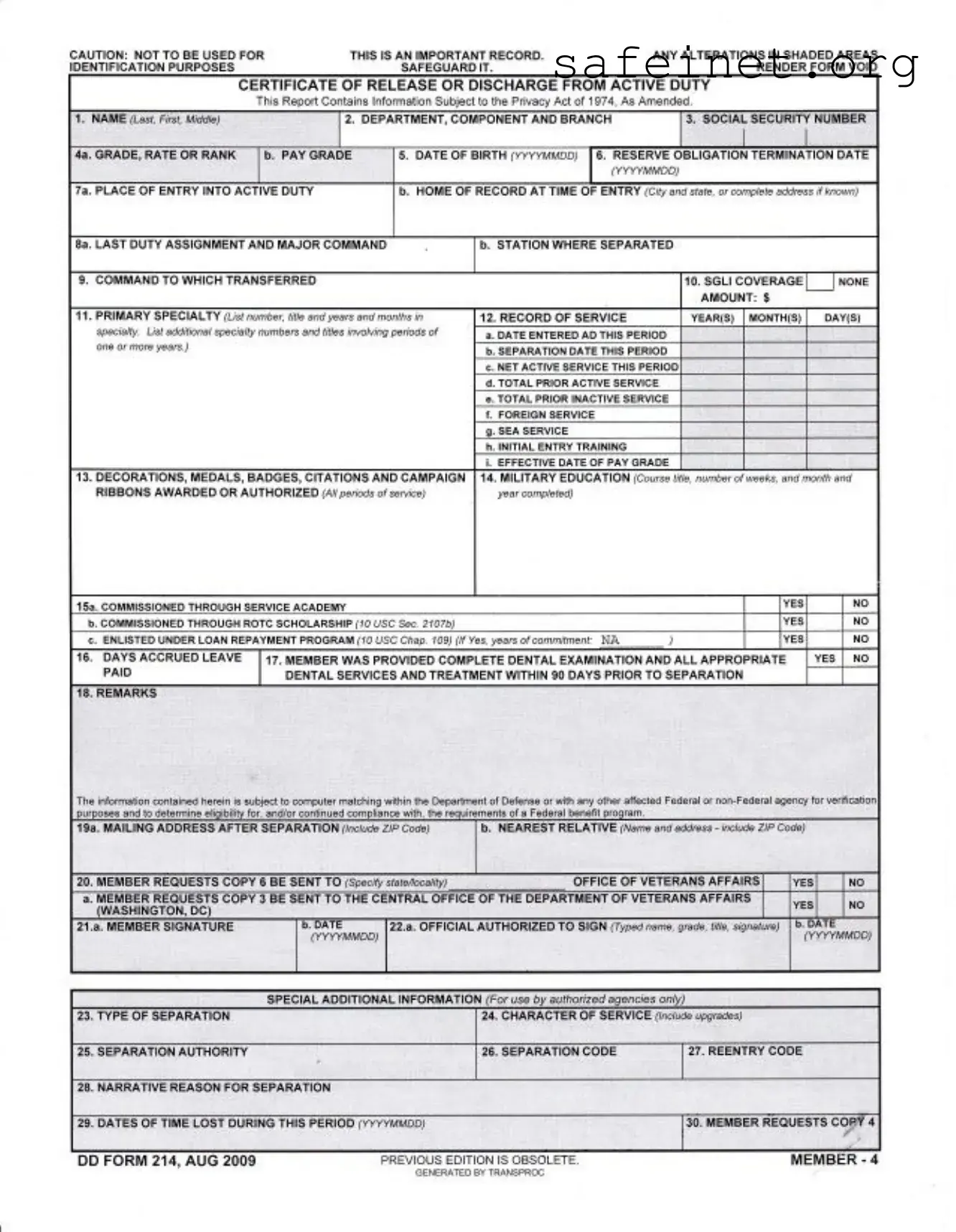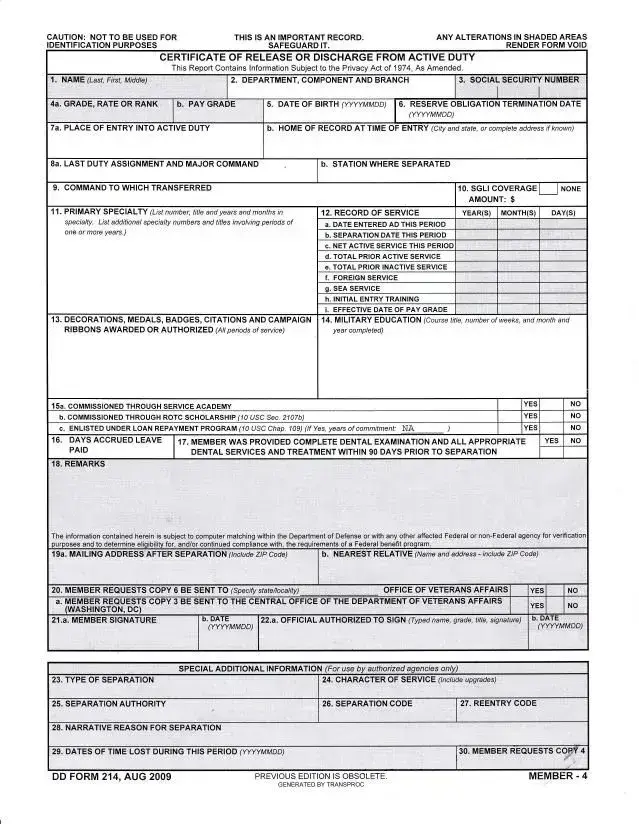The NGB Form 22, or the National Guard Report of Separation and Record of Service, serves a purpose similar to the DD Form 214 but is specific to members of the National Guard. This document details the service record of a Guardsman and is crucial for verifying military service and benefits eligibility. Like the DD214, it contains information about service dates, rank at discharge, and character of service. The NGB Form 22 is particularly important for National Guard members seeking access to VA benefits, as it verifies their active duty status and obligations. Both forms help bridge the gap between military service and civilian life, ensuring that service members can access the benefits they have earned.
The DD Form 215, Correction to DD Form 214, provides a way to amend information on the original DD Form 214. This document is essential for individuals who discover errors or omissions after their discharge. It allows veterans to correct important details such as dates of service, awards, and decorations. By providing an official amendment, the DD Form 215 helps protect the integrity of the service member’s record, ensuring that it accurately reflects their military history. This correction process is not dissimilar to addressing any inaccuracies found in vital records, emphasizing the importance of maintaining accurate historical documentation.
The VA Form 21-526EZ, Application for Disability Compensation and Related Compensation Benefits, is similar to the DD Form 214 in that it is used to access benefits. Veterans must submit this form to apply for disability compensation due to injuries or conditions incurred during military service. The DD Form 214 plays a crucial role in this process, as it serves as proof of military service and provides necessary details about the individual’s service record. Therefore, while the focus of the two forms differs, they are interconnected in the benefits application process, demonstrating the ongoing relationship veterans maintain with their military service.
The VA Form 22-5490, Application for Veterans’ Dependent Educational Assistance, is another important document used by veterans and their families. This form allows eligible dependents to apply for educational assistance benefits based on the service member’s record. Like the DD Form 214, it requires documentation of military service to determine eligibility. The DD Form 214 serves as a foundational element in proving a veteran’s entitlement to specific benefits, paralleling the VA Form 22-5490’s purpose of extending educational opportunities to service members’ dependents.
The SF-180, Request Pertaining to Military Records, is a form used to request information from service records held by the National Archives. Similar to the DD Form 214, the SF-180 is often used by individuals seeking access to their military backgrounds for various purposes, including benefits and verification. This form allows veterans to obtain copies of their discharge papers, including the DD Form 214, to confirm their service and qualifications for various programs. The relationship between these two documents showcases the importance of maintaining accurate and accessible military records.
The VA Form 21-4502, Application for Veterans’ Mortgage Life Insurance, also relates closely to the DD Form 214 by addressing financial benefits available to veterans. While this form focuses on mortgage life insurance, it requires proof of military service, which the DD Form 214 provides. This verification is essential for ensuring that veterans can secure financial products tailored to their unique circumstances. Both forms demonstrate the ongoing support available to veterans as they transition back into civilian life.
The DD Form 149, Application for Correction of Military Record, helps service members seek corrections to their military records, similar to the DD Form 215. Should a veteran find that critical information has been inaccurately reported or if they disagree with a discharge characterization, they may use the DD Form 149 to request a review and potential correction. This document emphasizes the importance of accurate service records, akin to managing personal records in competitive environments, ensuring that veterans maintain a truthful representation of their military history.
The Standard Form 86 (SF86), Questionnaire for National Security Positions, is utilized for a different but relevant purpose: obtaining security clearances for military members and veterans. It shares similarities with the DD Form 214 in that both documents require the accurate representation of a service member’s background. While the SF86 focuses on personal history to evaluate trustworthiness for security clearance, the DD Form 214 confirms military service details. Together, they assist in painting a comprehensive picture of a veteran’s qualifications and service history, which is critical for various post-service opportunities.
The DD Form 256, Honorable Discharge Certificate, is an official document signifying that a service member has completed their service honorably. Much like the DD Form 214, the DD Form 256 provides essential details regarding the service member's dates of service and character of service. For many, receiving this certificate is a significant milestone that complements the information found on the DD214. Both forms serve as tangible evidence of military service, and the DD Form 256 can be particularly valuable in pursuits of civilian employment and benefits.

